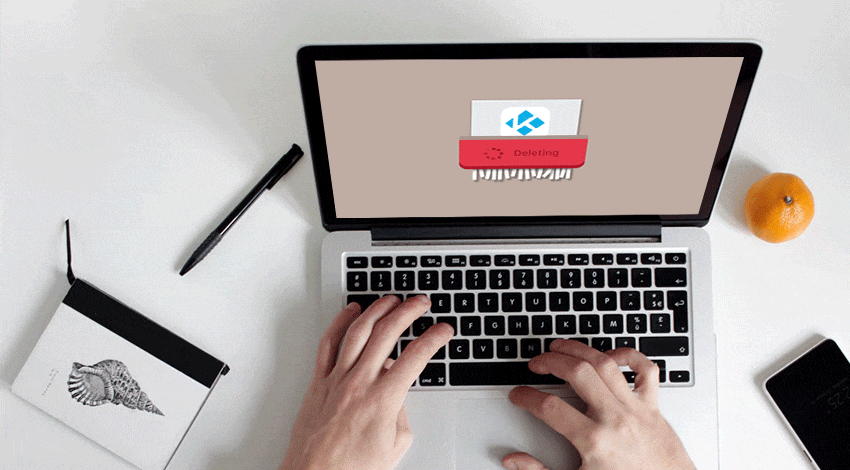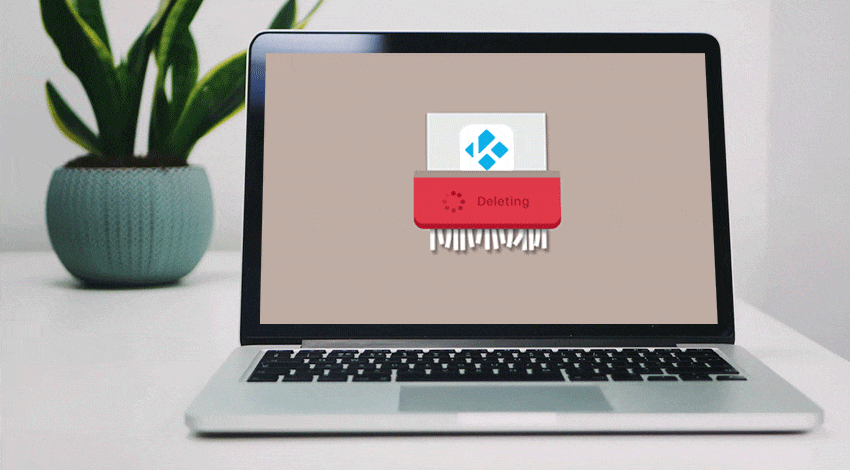Whenever Mac users encounter the task of tidying up their computers and laptops they have to delete unnecessary applications that consume precious HD space. Those who no longer need the app also should know how to ensure its total removal from their macOS. Generally, Mac aficionados don’t have problems with getting rid of unwanted software. However, deleting Kodi (previously known as XBMC) can be quite a doozy of a challenge for inexperienced users. This article aims to assist Mac users in removing the application from their computers, thereby making the task easier.
What Is Kodi?
Kodi is a commonly-used open-source media player for Macs. The player is a go-to choice for Mac users who need a universal tool for consuming media content. It is extremely handy for viewing videos, playing music, and listening to audio podcasts
What Hinders Smooth Removal of Kodi?

Erasing Kodi on Mac can be difficult due to the following issues:
- The application is corrupted;
- Associated libraries and databases cannot be deleted;
- The add-on cache of the media player stays on the computer;
- The root directory of Kodi cannot be found.
Two Approaches to Deleting Kodi
There are two approaches to ensuring that Kodi packs its bags and leaves your computer for good – erase it manually or use a specialized automated utility.
Delete Kodi Manually
Delete Kodi with an Uninstall Utility
The manual approach to removing Kodi requires several steps that should be taken in an orderly manner. This way of software removal necessitates a manual search of files associated with the media player and their subsequent deletion. If you change your mind, you can download Kodi from App Store for free and reinstall it. But let’s get back to the matter of our article. To remove Kodi, you need to:
- Locate and open the Application folder through the Finder. (Note that if the program is running, you should stop it.)
- Move the media player’s icon to the Trash.
- Remove it from the Trash by right-clicking on it and choosing the Empty Trash option from a shortcut menu.
After deleting the icon, it is necessary to make sure that all files related to Kodi are also properly removed from your computer. To this end:
- Click on the Go tab in the Finder menu and proceed to Go to Folder.
- In the search box, type ~/library/ and press Enter.
- Once in Library, locate the Preferences folder and delete it.
- Repeat the previous step to delete the following folders: Application Support, Caches, Launch Agents, Launch Daemons, and Receipts.
It has to be born in mind that the manual removal does not always help to eradicate all remnants of Kodi. Sometimes files associated with the program are located riotously on a computer. Specifically, some administration files lurk in unrelated directories, which complicates their removal. If you are not imbued with enthusiasm to manually comb folders of Skype, Chrome, and other apps, try using an advanced utility to uninstall Kodi.
There are dozens of efficient utilities in the market. Having made even shallow research on the topic, you will discover cleaning tools for every need and budget. From free mono-functional uninstallers with primitive design to all-inclusive maintenance software with tons of additional features – all are out there at your service.
The latter tools have been designed to facilitate not only the proper removal of Mac applications but also accomplishing a wide range of performance-improving tasks. Such apps obviate the need for advanced computer skills, which makes them particularly attractive for Mac newbies. In addition to the simplicity of this approach to app removal, it is also a more intelligent way of ensuring that hidden folders and sub-folders are detected and removed.
The process of uninstalling Kodi with specialized Mac cleaner revolves around two phases: analysis and deletion. Usually, one just needs to follow these quick steps:
- Install and run the utility;
- In the list of installed programs, select Kodi;
- Run system analysis to display all files associated with the media player;
- Complete the complete uninstallation of Kodi and related data;
- Restart your computer to ensure that all unwanted leftovers of Kodi are eradicated.
By following these steps, it is possible to ensure that self-contained packages of the media player are not piled up in multiple directories of your Mac. It is especially important for those users who yearn for additional space that can be used for storing their content and installing new apps. The importance of this point is underscored by the fact that Kodi can take up to 200 MB of your storage space.
Which Approach is Better?
 To help you choose between the manual and automated approaches to Kodi removal, here are two key takeaways for you:
To help you choose between the manual and automated approaches to Kodi removal, here are two key takeaways for you:
- Unlike most applications running on your Mac, Kodi leaves some junk files behind. Therefore, to completely delete the program, it is not sufficient to simply use the “Move to Trash” method. However, if you don’t want to get involved with sophisticated uninstall utilities and don’t mind left behind files, use the manual approach.
- The automated method of removing Kodi can help you to track down and clean all leftovers of the application, thereby freeing up additional drive space. Furthermore, this technique can be used for deleting and reinstalling the media player as a means of eliminating a recurring crash issue.
Hopefully, these instructions will help you to remove Kodi from your Mac once you decide it is no longer needed.
